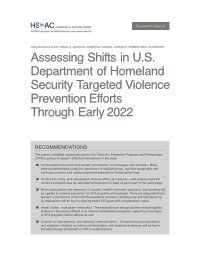By David Weisburd, Clair V. Uding, Kiseong Kuen, and Beidi Dong
Criminologists have long known that crime is highly concentrated—in most cities, approximately 50% of crime happens on only 5% of streets. As a result, many cities have effectively reduced crime by concentrating police resources in extremely high-crime “hot-spots.”
Despite calls for defunding the police, policing is necessary for public safety on hot-spot streets, and people who live on these streets recognize that. Indeed, in one survey in Phoenix, Arizona, the majority of residents of hot-spots streets said they wanted the amount of police on their block to be increased. But ultimately, the bedrock of social control of crime is not the police, but citizens who exercise informal social control.
The practice of community policing—which emphasizes building relationships with members of the community and allowing them to have a voice in defining which problems police should focus on—attempts to leverage this fact to enhance public safety. However, it is often assumed that high-crime hot spots are simply so chaotic and disordered that the residents are incapable of playing a key role in crime prevention.
We examined this assumption through a multiyear study of more than 300 hot-spot streets in Baltimore, Maryland (all of which were in the top 3% in rates of violent or drug crime in the city), as well as almost 50 “cold” streets, which had little to no crime, and 100 “cool” streets, which fell in the middle.
We found that common assumptions about hot spots—which we shared at the outset—are not accurate. Residents of hot-spot streets in Baltimore have strong social and network ties with their neighbors, and they exercise meaningful levels of informal social control. Even on the most crime-ridden blocks, there is potential for collaboration between residents and police.
Our findings suggest that it is time to think about how both informal and formal social control can work interactively to reduce crime. Hot-spots policing is an important first step, because the level of danger in these places can simply make it too dangerous for residents to exercise the type of informal social control that they would like. But residents of these streets, contrary to stereotypes of academics, policymakers, and practitioners, form an important resource for reducing crime on these streets through informal social control.
New York: Manhattan Institute 2024. 18p.














